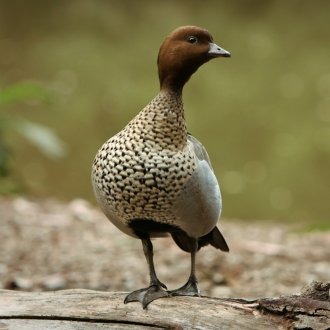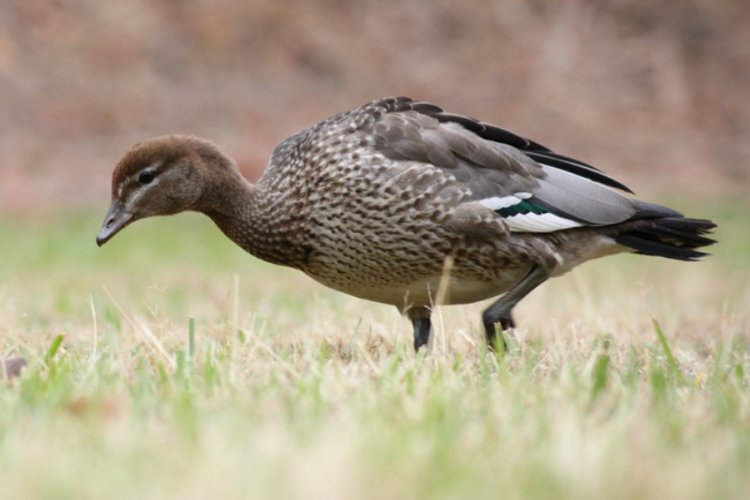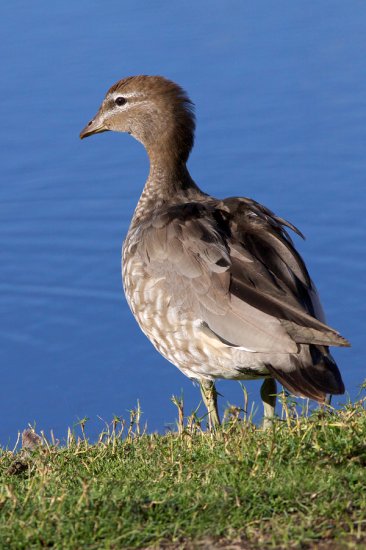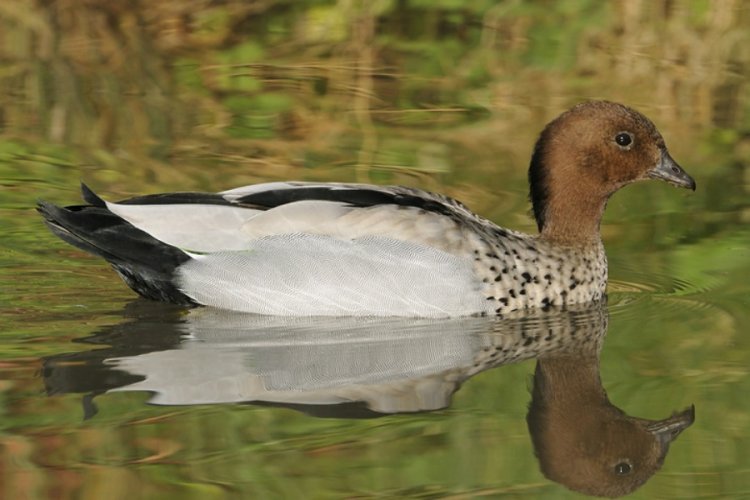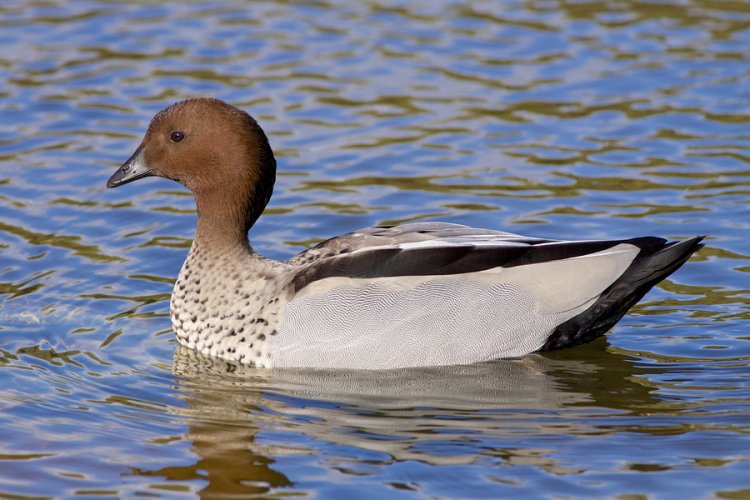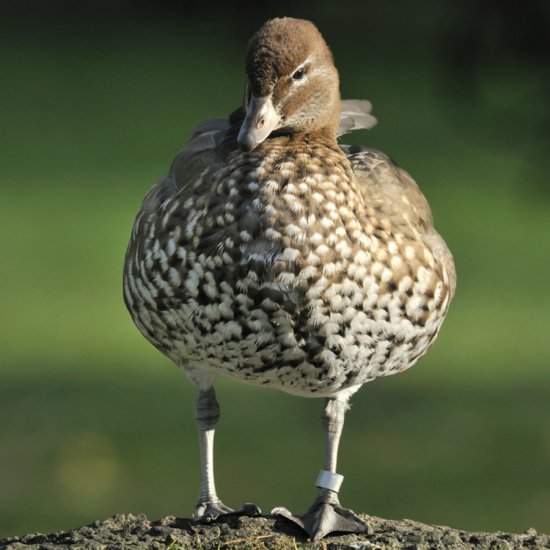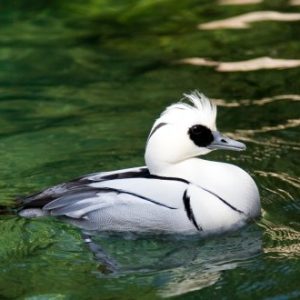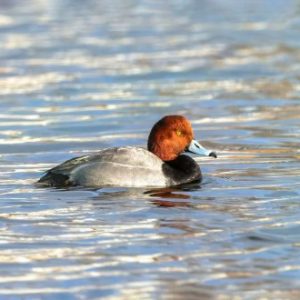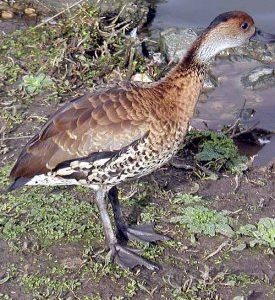Chenonetta jubata, Maned Geese are also known as Maned Ducks and as Australian Wood Ducks. They are the only species in their Genus, and ornithologists debate whether Maned Geese are more closely related to dabbling ducks as they do dabble or to shelducks or geese. They seem to exhibit characteristics of a variety of species.
Maned Geese are wonderful birds, and, of all the wild geese and ducks, they have a higher tendency to tame easily and become quite friendly and comfortable with humans. They are very distinctive in appearance, with beautiful spangling of white and chestnut brown feathers over the upper chest. Males have a deep brown head with a darker mane-like crest that raises when they display, on the back of the head and neck. Females are less flashy, with a duller brown head, but with light-colored stripes around the eyes. The body shape of the Maned Goose seems to be a mix of goose and duck, with a stubby bill and long legs. They are good flyers and are excellent at perching.
Maned Geese are hardy and easy to care for and get along fine with other types of waterfowl.
Range: The Australian Wood Duck is widespread in Australia, including Tasmania.
Habitat: Maned Geese are not found in arid regions, but they have adapted to many other habitats throughout Australia. They are common in grasslands, open woodlands, pastures, wetlands, along the coasts, and farm fields. Although these birds do dabble, they get most of their food from grazing on land. They are rarely seen inhabiting large open waters. Maned Geese roost in trees at nighttime and make their nests in tree cavities. Water is not a prerequisite for these birds, often nests are located in dense woods with no water in the vicinity.
Status in the Wild: The Maned Goose is very common in the wild, and is classified as of Least Concern.
Status in Aviculture: These birds are easy to maintain and do well in captivity and thus are very popular in waterfowl collections and aviaries throughout the world.
Breeding: Maned Geese breed well in captivity and can even raise 3 clutches of eggs in a year. Pairs do form monogamous bonds and they stay together year-round. Nest is located in tree cavities, and they often use the same cavity for nesting over and over. A clutch usually consists of 6-12 creamy-white eggs and is incubated only by the female for about 28 days. The male stands guard while she broods.
Lifespan: The Maned Goose has been known to reach 15-20 years of age.
Size: Maned Geese are medium-sized waterfowl. They are 17-20 inches long and weigh about 1.5 pounds.
Housing Requirements: Maned Geese do not need a large body of water. They are grazers, primarily. A large enclosure with access to pasture would be ideal. Maned Geese are excellent flyers, so take that into account when designing your enclosure. Be sure to provide protection from predators and perching areas, as these birds like to perch at night. For nesting, they will need a nest box placed quite high in the enclosure.
Diet: Maned Geese eat mostly pasture plants like grass, clovers, etc. They do dabble in shallow water in the wild but mostly graze along the banks of water sources. A quality waterfowl or game bird diet with access to grassy pasture would be an appropriate feeding plan.
Miscellaneous Notes: Female Maned Geese can be quite noisy and talkative. The males are much quieter, making low, nasal noises much like drakes of other duck species.

